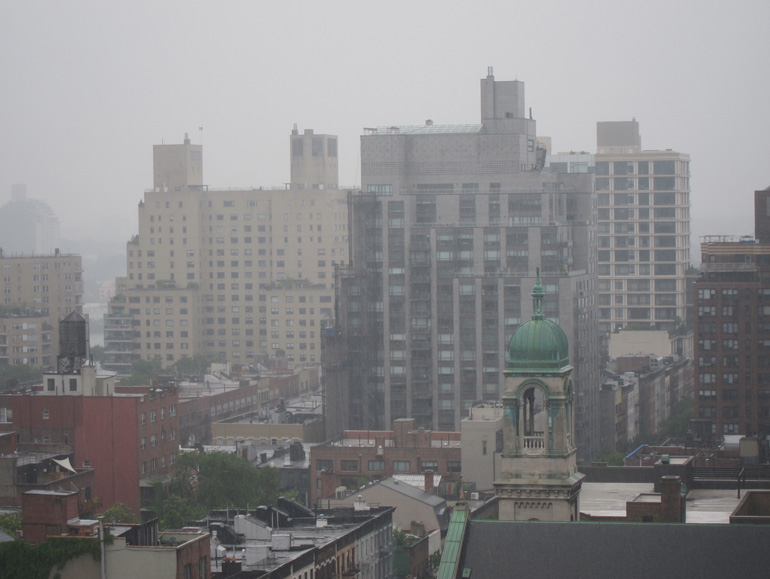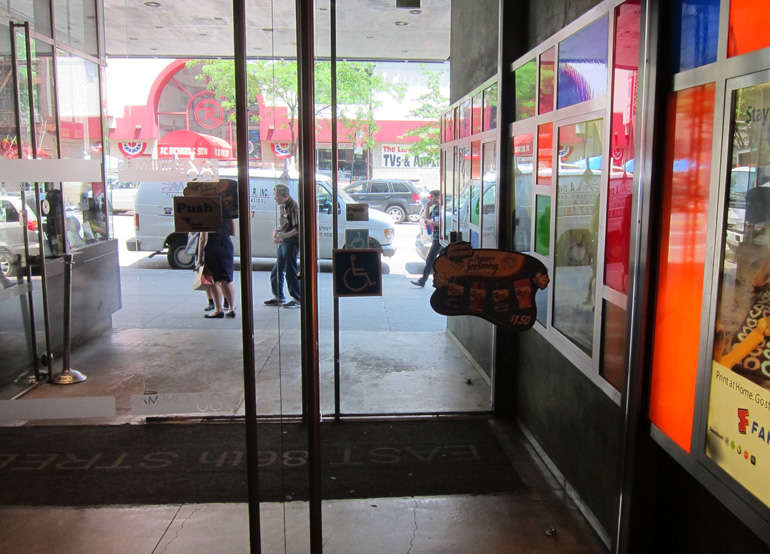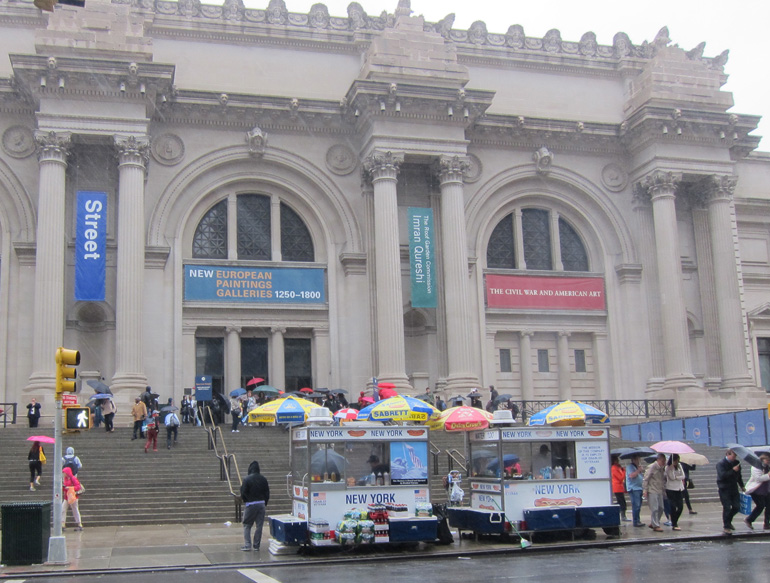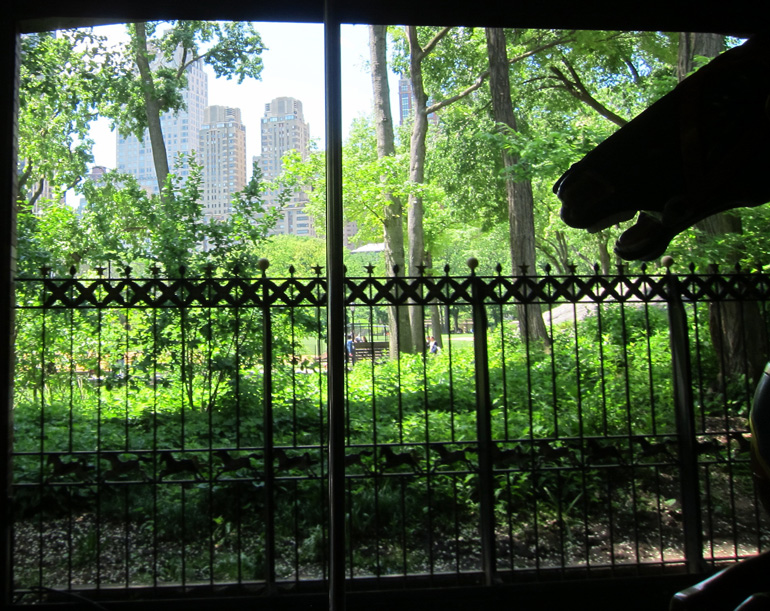Gotham Diary:
I have my doubts
18 June 2013
The book party, hosted by a law partner of the author who also happens to be a fellow trustee of Kathleen’s at the Brearley, was a small gathering of elite New Yorkers. The author, Frederic Rich, read from his forthcoming novel, Christian Nation, a dystopian counterfactual story in which John McCain wins the 2008 presidential election but promptly dies, leaving the country to Sarah Palin and her christianists. Things go downhill from there; the novel, I believe, is written from the perspective of 2029. After the reading, questions were solicited, and one guest sensibly asked, “Why a novel?” The author thereupon named six nonfiction books about Americans who long to inflict Dominion and Reconstruction upon an evil liberal democracy. All of these books were outstanding, in his view. Had anybody read them? No one had. That’s “why a novel”: novels can get things across.
But when the author asked if anyone knew what “dominionism” and “reconstructionism” are, I did raise my hand. I raised it to the self-deprecating height of my neck, and smiled ruefully, lest anybody think me pleased about being the solitary smarty. It took Mr Rich a few minutes to look in my direction. When he saw me, he smiled and said, “Ah, the blogger!” For I had given him my card at the beginning of the party. And when he asked if anyone had read Jonathan Haidt’s The Righteous Mind, I raised my hand again. “The blogger, of course!” Everyone laughed this time, nicely I thought. Later, when it came my turn to ask Mr Rich to inscribe my copy of his book, I told him that I would be honored if he made it out to “The Blogger,” which (I’ve just checked) is what he did.
If you have a look at yesterday’s entry, you’ll easily see that fortuity of event was piled on fortuity of reading. I’d been reading and writing about periods marked by the withering away of liberal democracies in France and Germany, in which Nazis came to power even though educated elites dismissed them as clowns. Similarly, the Republican Party has made cynical use of christianists ever since the Nixon Administration. It can happen here. When the question period ended, Kathleen turned to me and said that she’d wanted to ask Mr Rich what we could do to stop it.
For the rest of the evening, I tried to answer her question, not in terms of taking direct action to belittle or suppress christianists, but rather in terms of encouraging the elite to open up the bubble in which several guests at the book party had claimed that we live. The first thing to do, of course, is to read books like Haidt’s. Haidt’s somewhat schematic idea is that conservatives draw on greater reserves to strengthen their beliefs than liberals do, largely because liberals eschew traditional notions of the blood tie and the sacred. This is certainly arguable, but it is better seen as a point of departure for the development of positive liberal correlatives, rooted, perhaps fantastically, in doubt.
Between them, Eugenio and Otto Albert shared a little saying: that they should “prove Hamlet wrong.” If the Shakespearean figure was the archetype of immobilizing doubt, Colorni’s ideas were intent on demonstrating that doubt could propel deeds.
That is from Jeremy Adelman’s biography of Albert Hirschman. (Born Otto Albert Hirschmann, he became Albert O Hirschman in America. Eugenio Colorni was his brother-in-law.)
There are many things to do. One of these days, the idea of the elite itself must be subjected to some serious reconstruction. In the pattern familiar from history, elites grow smug and inattentive, and are either eliminated or co-opted by surging non-elites, who, however radical at first, soon settle into being elite themselves. Is it beyond the realm of possibility that an elite might reform itself — instead of trying, as elites fitfully do from time to time, to reform everybody else?
American elites ought to rally behind the idea of national service, starting it off unofficially if necessary. This national service would be tasked with useful projects, more or less in the nature of internships (designed not to put working adults out of their jobs), but the most important thing about it would be compulsory residence in relatively monastic barracks during the years that Americans now spend languishing in college. No saunas, no binge drinking. Rise and shine! Not a military life, perhaps — although it is in the elite’s own interest to extend its presence in the armed forces — but not a pool party, either. Lest you cock a skeptical brow, let me remind you that our now venerable prep schools were all founded in austere reaction to the pamperments of the Gilded Age. For several generations, at least, these schools produced a renewed elite burnished with strong commitments to self-restraint and public service. It can happen again.
***
The final stage of national service might be spent in community colleges studying such subjects as personal finance (with an accent on statistics) and serious home economics. Also on the curriculum: the Bibles, Homer, Horace, Shakespeare and Montaigne. (Learning from great doubters how to prove Hamlet wrong, in short.) Only after this common education (which would take a great deal less than four years) would some students move on to graduate schools — ideally, transplanted versions of France’s hautes écoles. Most would go into the world of work.
That’s a much thornier problem than reforming the elite. Where are the jobs going to come from? It occurred to me last night that the ecology of American business is in much worse shape than the ecology of the biosphere. (By “business,” I mean to exclude all activities in which money begets only money.) And the “population problem” has developed a different complexion: while we may still have to worry, a bit, about feeding everybody, the sharper challenge is providing people with meaningful occupation.






















